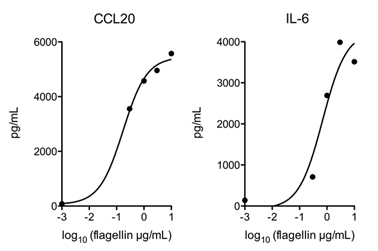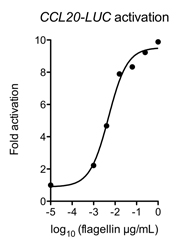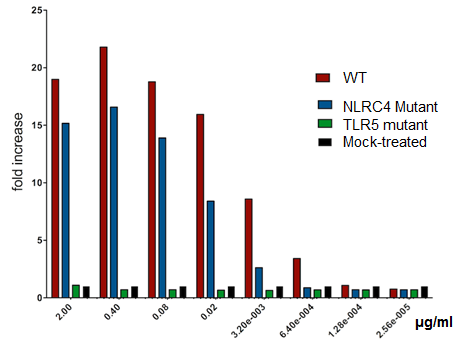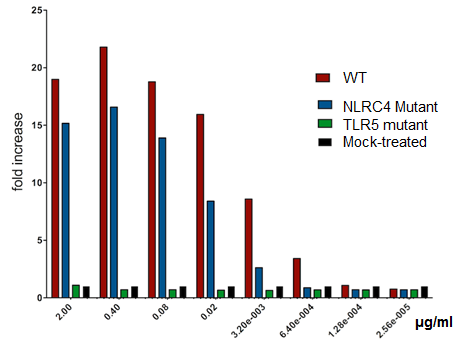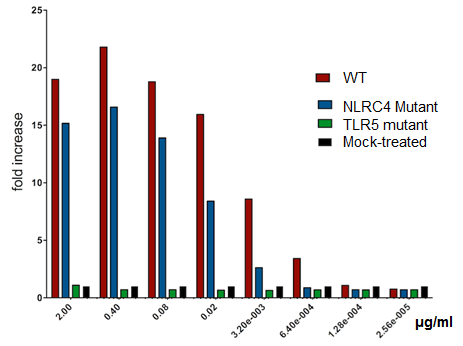
Flagellin (AG-40B-0243) activates TLR5 in vivo. Method: Mice WT are injected i.v. with indicated doses of Flagellin (Prod. No. AG-40B-0243). After 2 hours, levels of CCL20 and IL-6 in the serum were measured by ELISA. As a control, mice TLR5 -/- have been injected i.v. with 10microg of Flagellin (Prod. No. AG-40B-0243), but no expression of CCL20 and IL-6 could be observed (not shown).
Flagellin (rec.) (untagged) (highly active)
AG-40B-0243
Protein IDP06179
Product group Proteins / Signaling Molecules
Overview
- SupplierAdipoGen Life Sciences
- Product NameFlagellin (rec.) (untagged) (highly active)
- Delivery Days Customer10
- CertificationResearch Use Only
- Concentration1 mg/ml
- Estimated Purity>95%
- Protein IDP06179
- Protein NameFlagellin
- Scientific DescriptionFlagellin is the subunit protein which polymerizes to form the filaments of bacterial flagella. It activates the innate immune system through the receptor Toll-like Receptor 5 (TLR5) and the intracellular protein NLRC4 (NLR family CARD domain-containing protein 4). - Recombinant protein. Native flagellin [FliC] from Salmonella enterica Serovar Typhimurium strain ATCC14028 (aa 1-495). Activation of TLR5 in human epithelial cell assays based on NF-kappaB luciferase fusions, on expression of IL-8 (CXCL8), CCL20, inducible nitric oxide synthase, beta-defensin 2 and matrilysin (MMP-7). Maturation of dendritic cells in in vitro and in vivo assays. Adjuvant activity on foreign antigens delivered by subcutaneous and intranasal routes in mice. TLR5 can be stimulated in vitro by Flagellin (rec.) (untagged) (highly active) at a concentration of 5-50ng/ml and in vivo at a starting concentration of 0.1-1microg/mouse. Source: E. coli. Lyophilized. Contains PBS. Flagellin is the subunit protein which polymerizes to form the filaments of bacterial flagella. It activates the innate immune system through the receptor Toll-like Receptor 5 (TLR5) and the intracellular protein NLRC4 (NLR family CARD domain-containing protein 4).
- Storage Instruction-20°C,2°C to 8°C
- UNSPSC12352202

